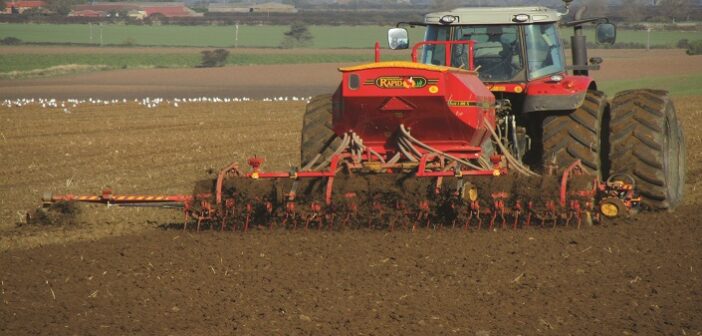Growers planning to drill winter cereals early this year are being urged to focus on crop nutrition, due to deficient soil reserves following continuous wet weather last season.
Chris Bond, crop nutrition product manager at FMC, says it is natural that some growers will consider drilling winter cereals earlier than usual this year, to encourage crop establishment and avoid potential issues later down the line.
However, he warns the wet 23/24 season will have reduced soil reserves, not least in nitrogen and sulphur but also, magnesium, zinc and manganese.
For this reason, Mr Bond emphasises the importance of addressing nutrient deficiencies and recommends a nutritional top up to bolster soil health.
He says: “A combination of these key nutrients plays a vital role in ensuring optimum early establishment.
“This is particularly important if your crops are in the ground 4-5 weeks longer than usual.
“Therefore, to maximise the benefits of early drilling, supplementing these nutrients that have been lost through leaching and run-off will give the crop the best start.”
He notes that sandy, light or calcareous soils will be especially affected by leaching.
“Nurturing the crop below ground is just as important as growth above ground,” Mr Bond says.
“A crop may appear to be thriving in its first few weeks, but if it hasn’t got an equally strong root and soil structure, then it will be left exposed to threat over the winter while it’s growth is dormant.”
For growers considering a foliar application of nutrients, Mr Bond suggests Cereal Plus™ which contains magnesium, manganese, copper and zinc.
He explains that magnesium is required to keep the photosynthetic machinery of the crop working efficiently and ensures efficient export of sugars and amino acids from the leaf.
“Manganese is also a vital component of proteins that receive energy harvested in the process of photosynthesis, while zinc supports the structure of the cell membrane,” says Mr Bond.
“When a crop has optimum availability to all these key nutrients, it’s far better equipped to defend itself against weed burdens and disease pressure too.”
Applications can be made at any time after the three-leaf stage when sufficient foliage has developed to absorb the nutrients.
“Experiencing the knock-on effect of one season onto the next may seem disheartening, but focusing on soil health and crop nutrition will do a lot to set you up for a strong start,” he concludes.




